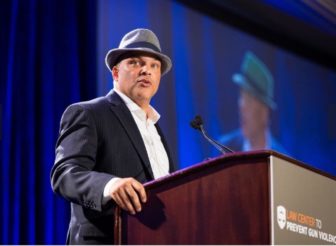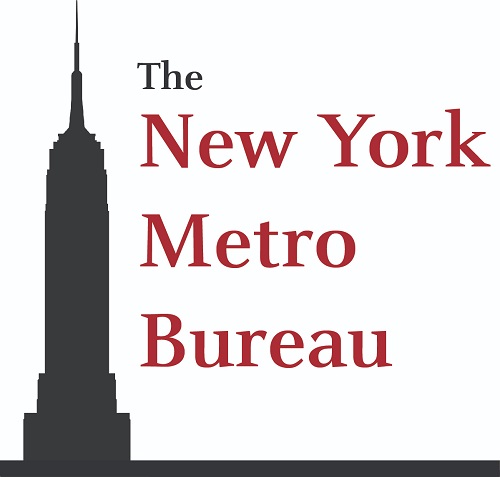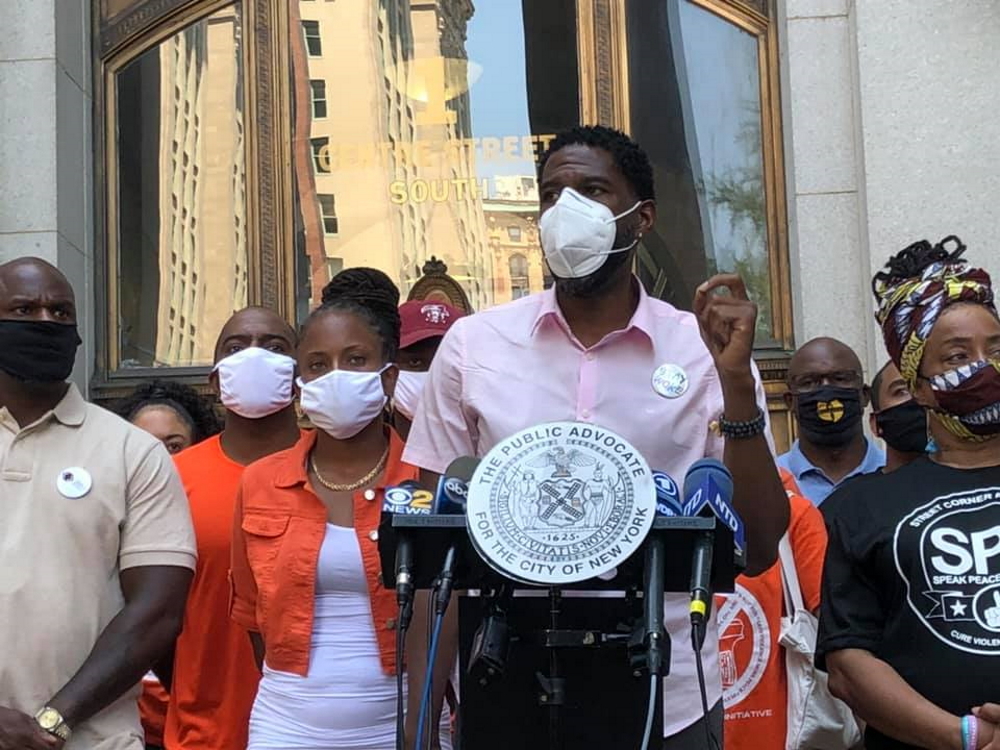NEW YORK — Jumaane Williams, New York City’s public advocate, announced his proposal for curbing gun violence in the five boroughs after a week of at least 64 shootings. Only 20 were reported for the same week in 2019.
Williams unveiled his ideas in a letter to Mayor Bill de Blasio and New York City Police Commissioner Dermot Shea on Friday. Putting into place CompStat, the New York Police Department’s statistical data tool and a new “Advance Peace” crisis management system were at the top of his list. He also called for changes to the police department’s responses right away but the timeline was unclear.
Williams is no stranger to trying to tackle police reform. On July 15, de Blasio signed Williams’ Right to Record legislation, which codifies and protects the rights of civilians to record police activity.
While discussing the letter in a Facebook Live on Wednesday, Williams said the increase in gun violence ties in directly with the coronavirus pandemic, not only in New York City, but across the nation.
“As I’ve mentioned before, these same communities post-pandemic are seeing a rise in many of the issues they’d been dealing with pre-pandemic, so housing has gotten worse, the housing issues, access to health has gotten worse, food insecurity has gotten worse, unemployment has gotten worse,” Williams said. “There’s no reason that we shouldn’t have anticipated well before this that an issue like gun violence, which we try to treat as a public health crisis, would also get worse. We should’ve begun planning for it long before.”
He did not share concrete plans on how the programs or stipends would be funded, but according to a source from WIlliams' office who spoke on background, funding could be allocated from the NYPD’s $6 billion budget. The source also said that Williams brought these discussions to the table during the most recent budget negotiations, minus the Advance Peace model.
All three of Williams’ plans include increased community involvement. For CompStat, he would like changes on both the precinct and administrative level.
Local stakeholders from each precinct, including crisis management system partners and other nonprofit organizations working in the area, should be invited to review local data and collaborate with city agencies in a response to crimes in the community, Williams said.
As for changes at the administrative level, relevant city agencies like the Department of Health and Mental Hygiene and the Department of Social Services, which are charged with the health and safety of New Yorkers, should also review the data and help develop agency-specific responses, he said.
Model working in California recommended
The Advance Peace model is from a Richmond, California-based organization dedicated to ending gun violence in urban neighborhoods. Its Peacemaker Fellowship provides mentorship and guidance for individuals considered most lethal in their communities and provides stipends for those who achieve goals set for them, such as getting a driver’s license or their GED.
Stipends range between $300-$1,000 per month during the 18-month program, and fellows can receive stipends in nine of these months, Williams’ letter says. He suggests that in New York City the program could move away from a strict semimonthly metric.

DeVone Boggan
DeVone Boggan, the founder of Advance Peace, said the program and its Peacemaker Fellowship can work successfully and deliver optimal results anywhere, including New York City.
The fellowship is currently in three California cities, Richmond, Sacramento and Stockton, and 300 fellows have completed the program.
Of those who have completed Advance Peace’s program, 95% are alive today, 80% haven’t been injured by a firearm since becoming a fellow and 73% are not a suspect in a new firearm crime since becoming a fellow.
Public funds pay for operating costs; other program costs, including stipends, are paid for by philanthropy and other grant opportunities, Boggan said.
“I know some will balk at giving money directly to individuals as incentive,” Williams wrote. “I would counter that we have to reevaluate our thought process ... Why are we more comfortable spending billions on law enforcement and incarceral solutions but not a fraction of that on proven solutions? It is after all the same money.”
What city already does
While New York City does not have a Cure Violence program, groups similar to Advance Peace use the model as part of the city’s crisis management system, according to the Mayor’s Office of Criminal Justice. The model identifies individuals most likely to be involved in gun violence and deploys interventions aimed at stopping that behavior before it occurs.
The crisis management system includes over 50 organizations that use the Cure Violence method, offer conflict mediation in schools and job training. All organizations involved in the crisis management system are community-based.
 The groups work in specific catchment areas, chosen for a variety of different factors including shooting numbers and other crime statistics that come from the police department as well as by talking to local officials, according to the Mayor’s Office of Criminal Justice.
The groups work in specific catchment areas, chosen for a variety of different factors including shooting numbers and other crime statistics that come from the police department as well as by talking to local officials, according to the Mayor’s Office of Criminal Justice.
The crisis management system has been expanded three times within the past year. In August 2019, $1 million was used to expand the violence disruption program in Brownsville’s 73rd Precinct. In December, the program was further expanded in Brownsville and new investments in six other locations.
In June 2020, the city announced crisis management system expansions to five precincts in Brooklyn, the Bronx and Queens. These expansions may be delayed due to the pandemic, said the Mayor’s Office of Criminal Justice.
The Public Advocate, however, is looking for changes to be made immediately, he said during Facebook talk.
Williams’ last plan included him asking for law enforcement to do their job with equity, transparency and accountability. He said the NYPD has blamed the increase in gun violence on the recent reforms passed on both the city and state level, but that the correlation does not exist.
“Regarding the new city legislation, of which the greatest concern has been around expansive language in the chokehold law, the suggestion of correlation is again a false narrative,” Williams wrote. “To be clear, the department very rarely supports any reform bills put forth. To be even clearer, some of the loudest voices such as the unions never come to the table at all, they perform with dereliction of duty.”
Williams said that conversations on public safety didn’t happen during the city’s most recent budget cycle, which ended on June 30. In the future, these conversations must be had.
“Those who believe that law enforcement have no role to play in our public safety discussion are wrong,” Williams said. Those who believe law enforcement is the only role needed in public safety could not be further from reality.”
